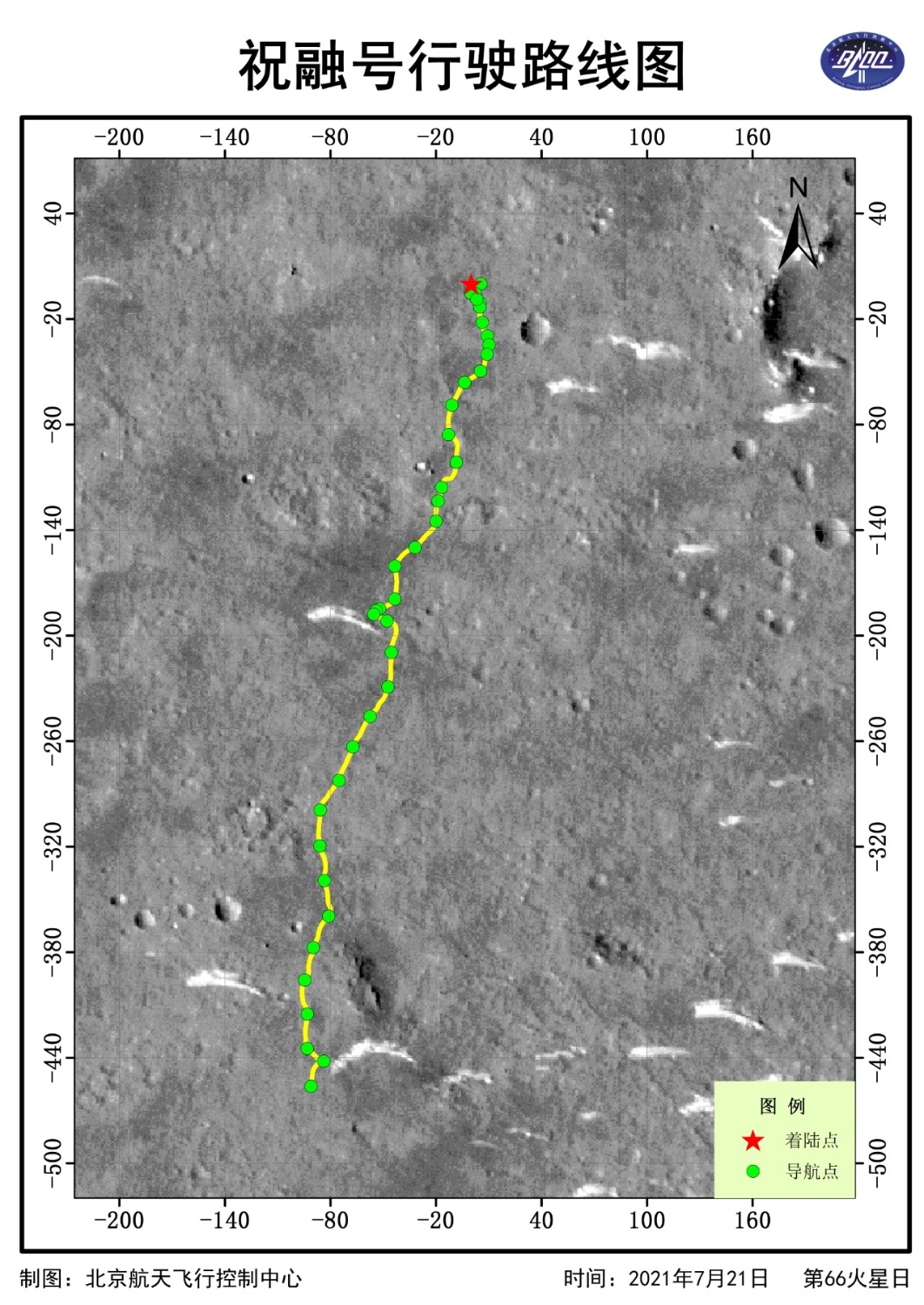China's Zhurong Mars rover scopes out dunes on journey south
The rover has been analyzing its surroundings and even visited its own parachute.

China's Zhurong rover has quietly clocked up 1,900 feet (585 meters) of driving on Mars and has been using its science instruments to check out nearby geologic features in Utopia Planitia.
Zhurong's latest exploits have seen it analyze dunes amid the local rocky Martian terrain and visit the backshell and parachute that helped the rover land safely on the Red Planet.
A new release by the China National Space Administration on July 23, also marking the first anniversary of the launch of China's Tianwen-1 Mars mission, showed Zhurong had visited a second wind-formed sand dune.
Related: China's Mars rover Zhurong just snapped an epic self-portrait on the Red Planet (photos)
The rover used its surface composition detectors, multi-spectral cameras and other science payloads to analyze the formation, according to the update.
Zhurong landed on Mars in May and rolled onto the surface a week later, making China just the second country after the United States to land and operate a rover on Mars. The rover's first feat was driving away from the lander, dropping a small, remote camera, and returning to pose with the lander for an epic selfie.
Later updates have included remarkable roving footage as well as sounds captured by the rover's climate station.
Get the Space.com Newsletter
Breaking space news, the latest updates on rocket launches, skywatching events and more!
The solar-powered rover has since been making its way south of the landing site. The CNSA released a map showing Zhurong's travels up to July 21 and covering 66 Mars days, or sols. Both Zhurong's parent orbiter, Tianwen-1, and NASA's Mars Reconnaissance Orbiter have also been monitoring the journey.

Tianwen-1 currently orbits Mars every 8 hours, in an orbit designed so the spacecraft passes over Zhurong once every Martian day, allowing the orbiter to relay data from the rover back to Earth. Tianwen-1 began circling the Red Planet in February, arriving just hours after the United Arab Emirates' Hope orbiter and a week before NASA's Perseverance rover reached Mars.
Zhurong has been operating on the surface for 68 Mars sols, or 69 Earth days. The rover's primary mission is scheduled to last 90 sols, and China has not stated whether Zhurong will continue beyond this. However, China's Yutu 2 rover on the far side of the moon has operated for more than 30 lunar days after landing in , despite a design lifetime of just three lunar days, or three Earth months.
Mars is currently about 235 million miles (378 million kilometers) away from Earth, meaning sending data or commands one way takes 21 minutes.
Follow us on Twitter @Spacedotcom and on Facebook.
Join our Space Forums to keep talking space on the latest missions, night sky and more! And if you have a news tip, correction or comment, let us know at: community@space.com.

Andrew is a freelance space journalist with a focus on reporting on China's rapidly growing space sector. He began writing for Space.com in 2019 and writes for SpaceNews, IEEE Spectrum, National Geographic, Sky & Telescope, New Scientist and others. Andrew first caught the space bug when, as a youngster, he saw Voyager images of other worlds in our solar system for the first time. Away from space, Andrew enjoys trail running in the forests of Finland. You can follow him on Twitter @AJ_FI.









